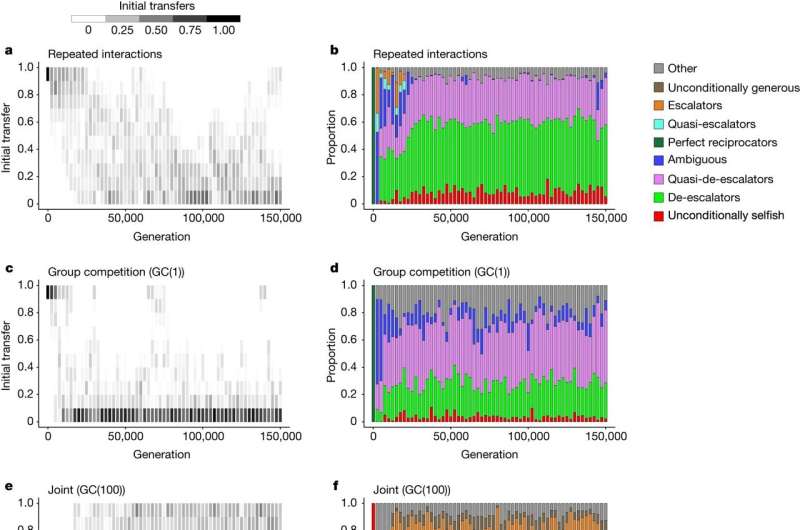February 22, 2024 report
This article has been reviewed according to Science X's editorial process and policies. Editors have highlighted the following attributes while ensuring the content's credibility:
fact-checked
peer-reviewed publication
trusted source
proofread
Research combines two leading theories to better explain how and why people cooperate with one another

A team of economists from Switzerland and Germany has found, via model testing, that two leading theories created to explain why humans engage in cooperation with one another tend to fail under scrutiny. In their paper published in the journal Nature the group describes how further model and field testing showed that it was only when the two theories were combined that they proved able to describe scenarios where humans cooperated.
Humans cooperate with one another on a variety of levels and in different kinds of situations. Research suggests that the reason humans have evolved in a way that promotes cooperation is that it leads to an eventual payoff for both parties. Such research has also shown that it is much easier to explain how and why reciprocity works when it is clear that the person performing the first act is reasonably sure they will see the other person again, likely leading them to reciprocate.
Much more difficult to explain is why humans sometimes engage in behaviors that would normally be seen as a first move in cooperation, when there is no assurance they will see the recipient again, and thus may not reap a reward. In this new study, the research team tested theories that have attempted to explain such behavior.
The researchers began their effort by noting that there are two leading theories that explain such behavior; one offers a hypothesis that suggests the behavior evolved surrounding ancestral groups and rules that have formed over time. The second suggests that such behavior is due to group competition.
The team created models to test both theories and found that neither approach led to reliable support for reciprocity and thus rewards for continued behavior. But they found that when they grouped the two theories together, things worked much better. Repeated interactions within groups, while there was also competition, could lead to super-additive cooperation, where the two mechanisms interacted synergistically to support high levels of ingroup cooperation and low levels of outgroup cooperation.
The team ventured to Papua New Guinea to test their ideas on two groups of people living there, the Perepka and the Ngenika. In experiments involving giving money to one person and asking them to share it with a partner, they found that applying both theories yielded results similar to those they had found with their models.
More information: Charles Efferson et al, Super-additive cooperation, Nature (2024). DOI: 10.1038/s41586-024-07077-w
Journal information: Nature
© 2024 Science X Network




















